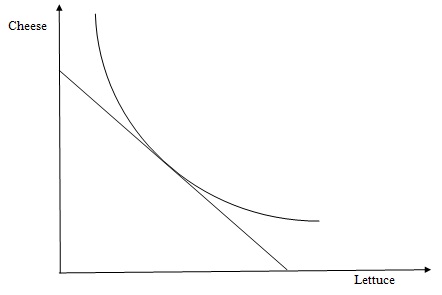Jim a vegetarian. All he eats is lettuce and cheese. His original budget constraint and utility maximizing bundle are illustrated in the graph shown below:

a. The price of lettuce falls, but we observe that Jim’s consumption of lettuce remains unchanged. Using the graph, illustratethe price change. On the graph, clearly label the old and new consumption bundles. Derive and label the income and substitution effects for lettuce.
b. Is cheese a normal good to Jim? How do you know? If so, can you tell if it’s a luxury or a necessity?